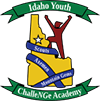Watch the YouTube video below, which introduces the “Mentoring Pyramid” of the Youth ChalleNGe Program, and then complete the readings and activities that follow.
Objectives:
- Identify the five areas of the Mentoring Pyramid
- Develop skills in forming open-ended and quality questions to ask of the Mentee
- Be introduced to active listening techniques
Key Points:
A Mentor is a person or friend who guides a less experienced person by building trust and modeling positive behaviors. An effective Mentor understands that his or her role is to be dependable, engaged, authentic, and tuned into the needs of the Mentee.
Today, most youth development organizations recognize the importance of a child having a caring responsible adult in their lives. For children who come from less than ideal circumstances, mentoring can be a critical ingredient towards positive youth outcomes. Developmental psychologist and co-founder of Head Start, Urie Bronfenbrenner said it best: “Development, it turns out, occurs through this process of progressively more complex exchange between a child and somebody else – especially somebody who’s crazy about that child.”
The word mentor comes from the character “Mentor” in Homer’s epic tale, The Odyssey. Mentor was a trusted friend of Odysseus, the king of Ithaca. When Odysseus fought in the Trojan War, Mentor served as friend and counsel to Odysseus’ son Telemachus. Riverside Webster’s II New College Dictionary 1995 defines a mentor as “a wise and trusted teacher or counselor”. The act of mentoring is a series of ongoing and little successes. You will be able to make a real impact through consistent and ongoing relationship building.
Checklist:
___ Review the Resources
___ Complete Activities
___ Complete the Module 3 Training Questions
Resources:
- Audio: Requested file could not be found (error code 404). Verify the file URL specified in the shortcode.: This section of the Bob Hague Radio Show discusses some of the successes of the various Cadets from the Wisconsin ChalleNGe Academy.
- Audio: : This is a radio commercial that outlines some of the skills a cadet will gain through the Alaska ChalleNGe Academy.
- Audio: : In this radio commercial, Mike Minter of the Carolina Panthers shares why it is important to never give up and how the ChalleNGe Program can help.
- Audio: : Col. Larry Apell and Cadet Michael Arroyo discuss the graduation rates and the role of the military approach to guiding youth.
Activities:
- The volunteer inventory below defines several reasons why you might volunteer to be a Mentor. Review the examples given, and think about own reasons, in preparation for the Training Module 4 Activity.
| Function | Description | Example |
| Values Function: | The person is volunteering in order to express or act on important values, such as humanism and helping the less fortunate. | “I hear so much about the hard lives these kids have and feel I should do what I can to help.” |
| Understanding Function: | The volunteer is seeking to learn more about the world and/or exercise skills that are often unused. | “I know I’ve lived a sheltered life, so I want to know what these kids are dealing with.” |
| Enhancement Function: | The individual is seeking to grow and develop psychologically through involvement in volunteering. | “I get such a good feeling when I am helping others.” |
| Career Function: | The volunteer has the goal of gaining career-related experience through volunteering. | “I’m considering getting into education and want to see how I get along with children.” |
| Social Function: | Volunteering allows the person to strengthen one’s social relationships. | “Two of my good friends are mentors and they say I’d be good at it.” |
| Protective Function: | The individual uses volunteering to reduce negative feelings, such as guilt, or to address personal issues. | “I want to give a child the role model I never had growing up.” |
